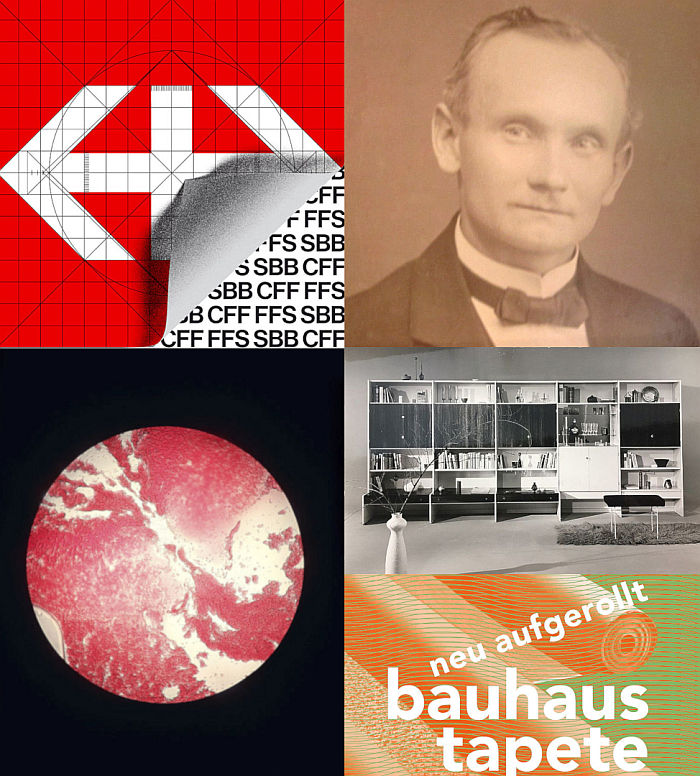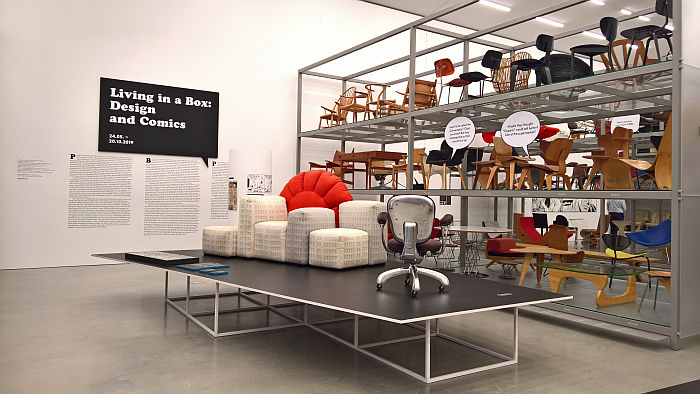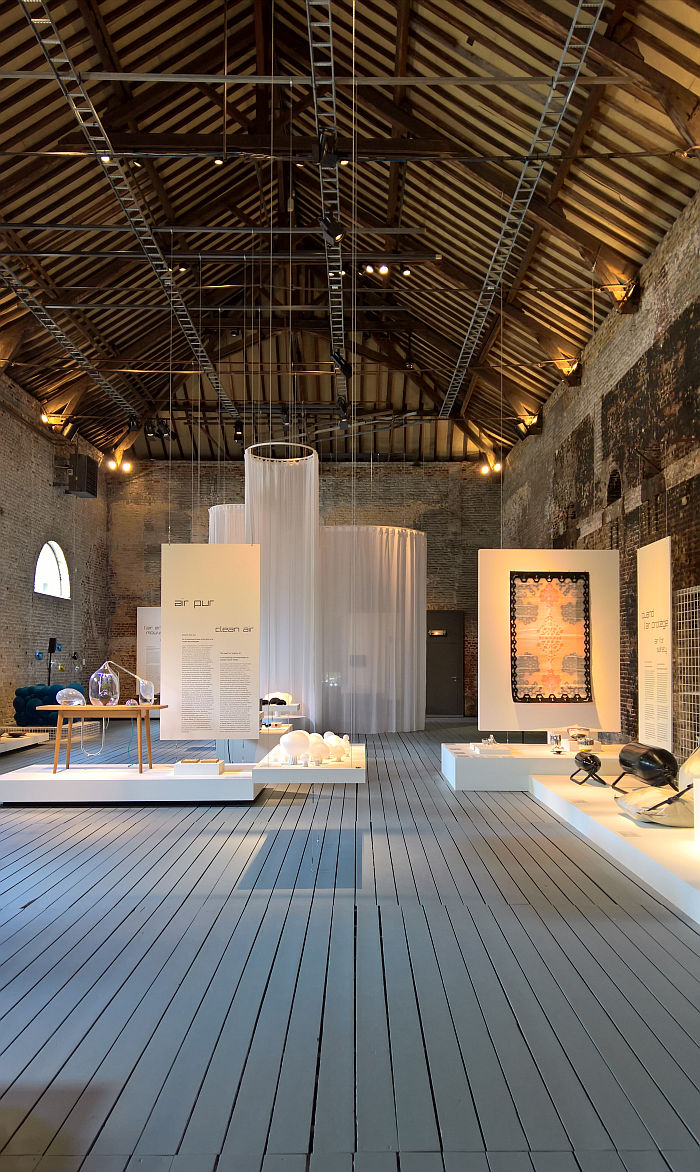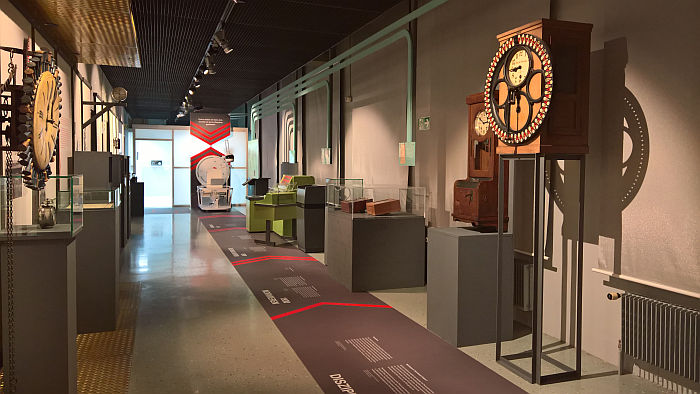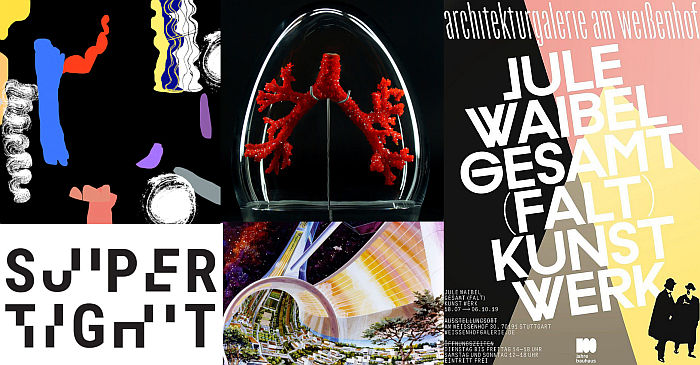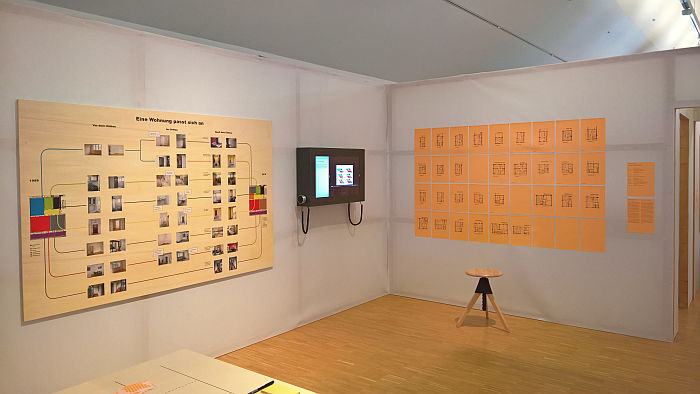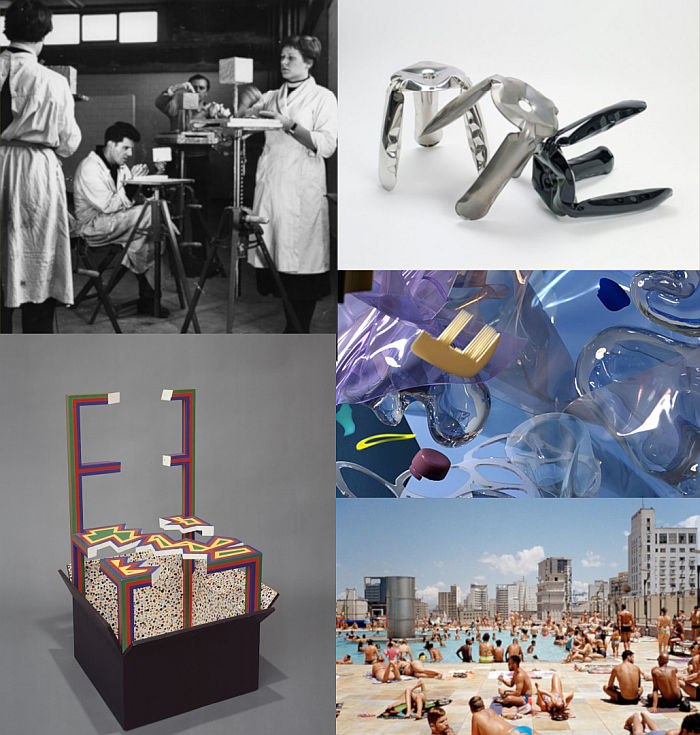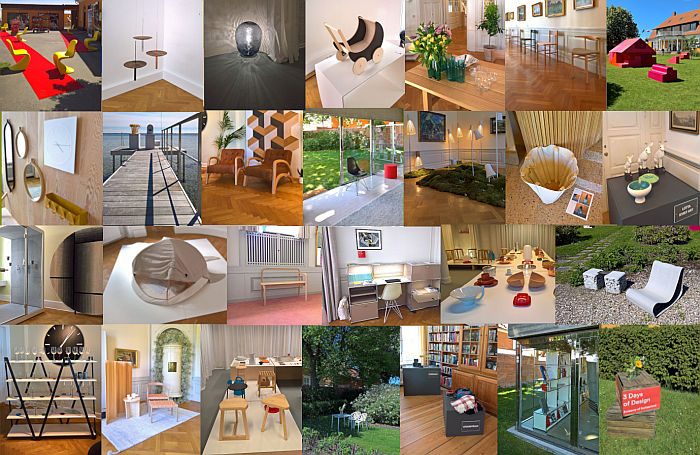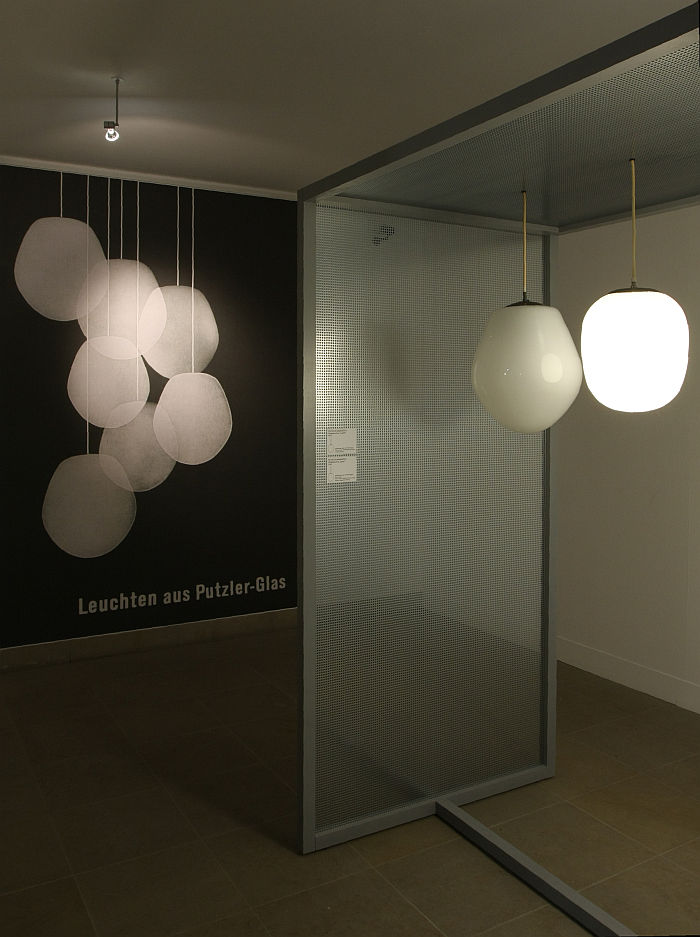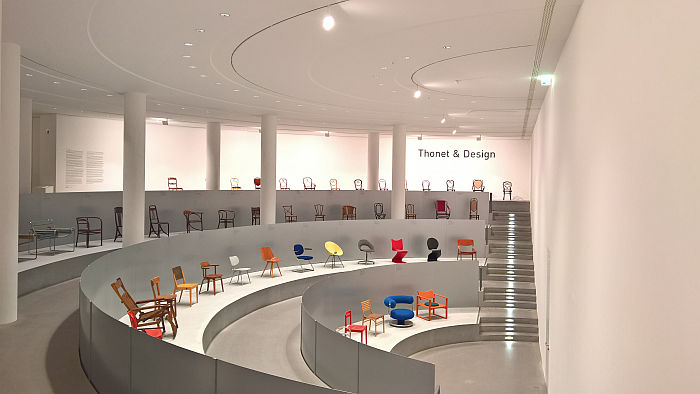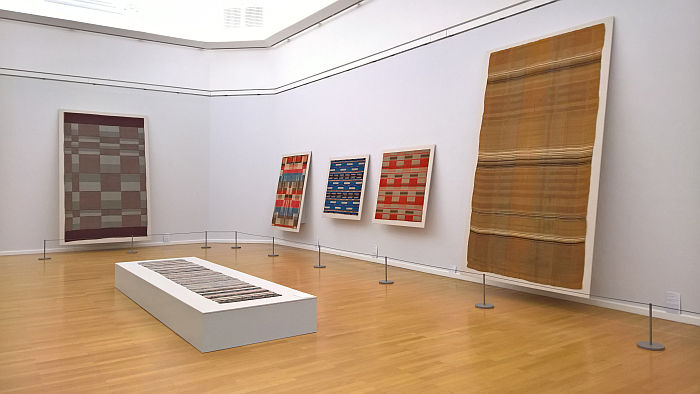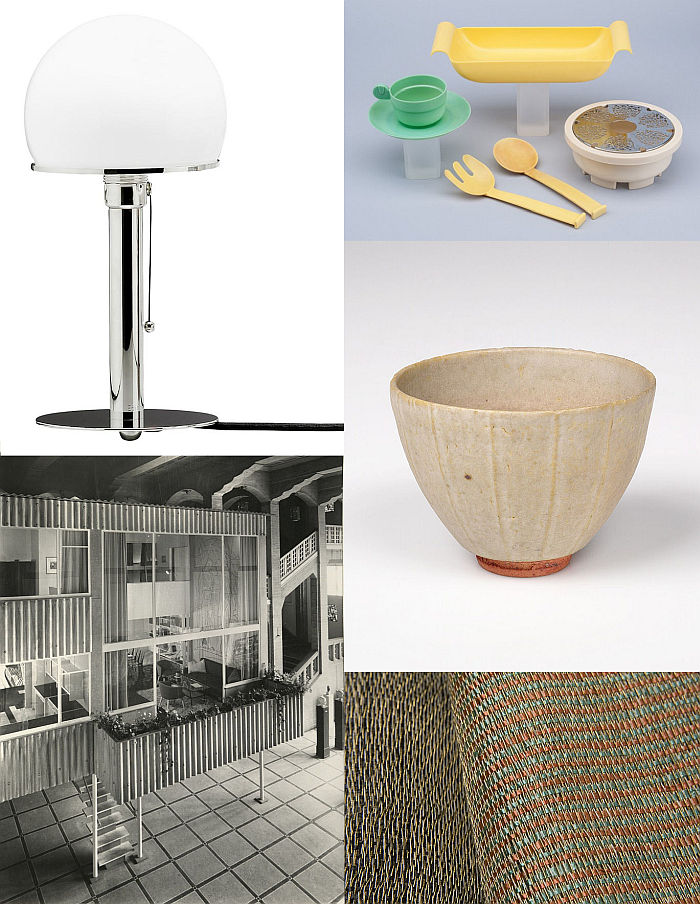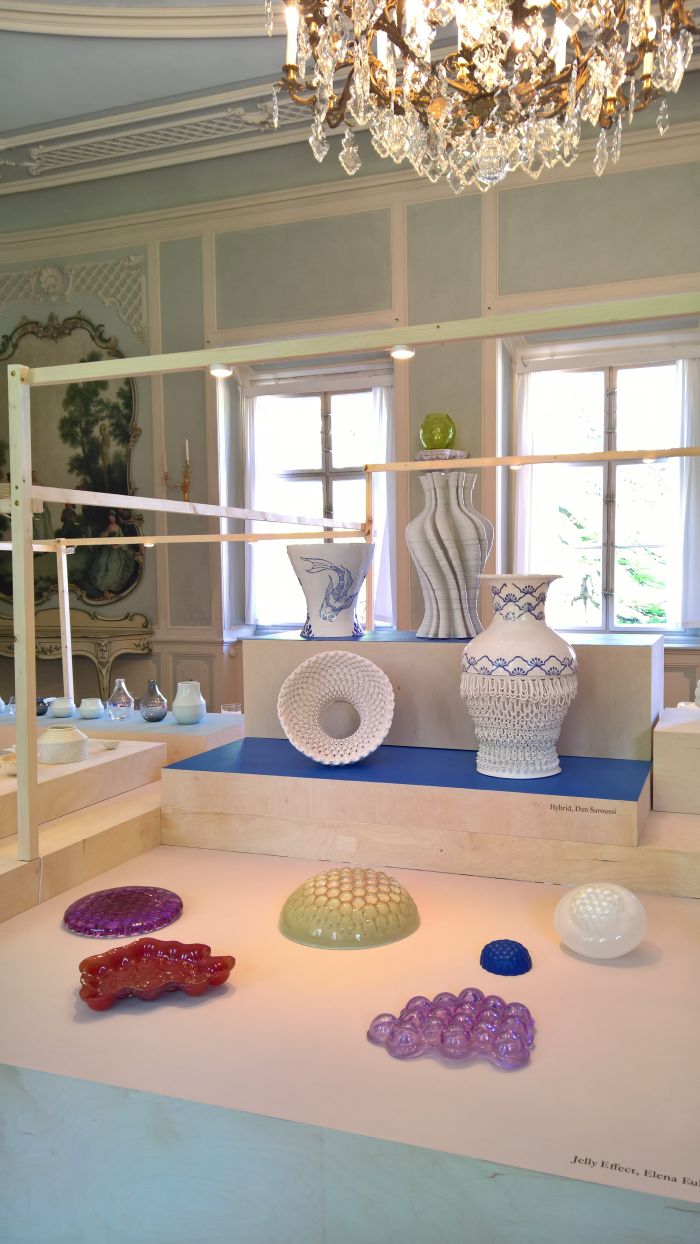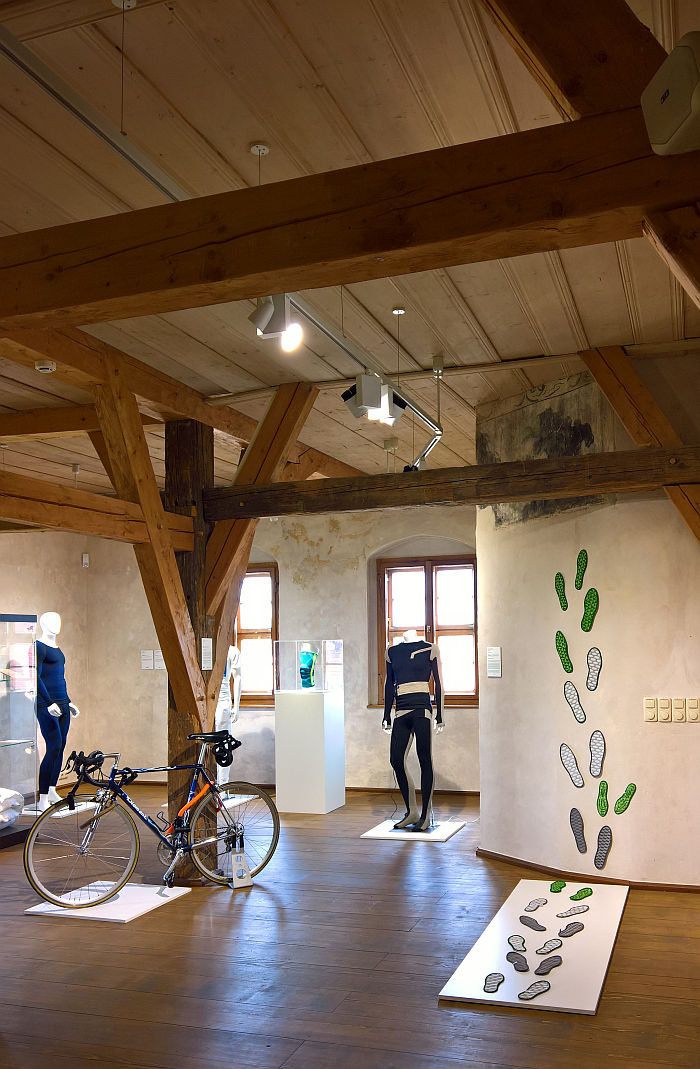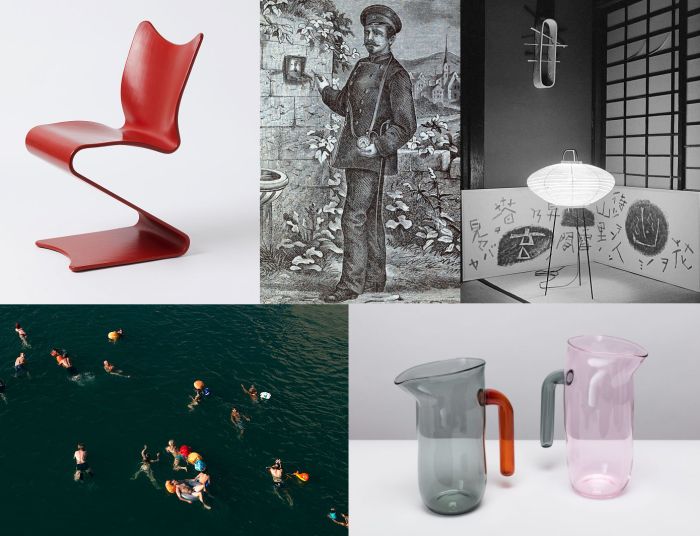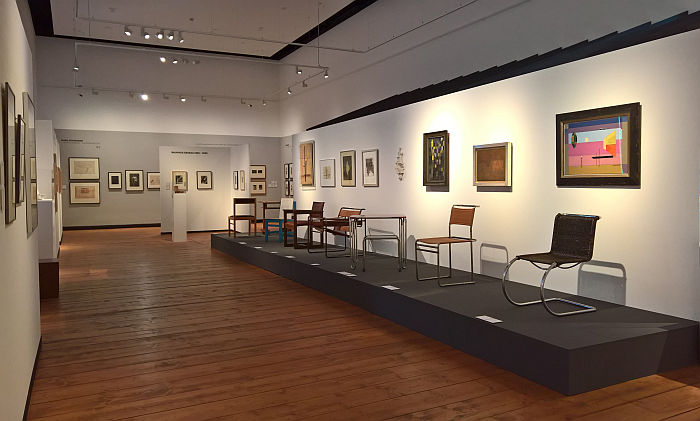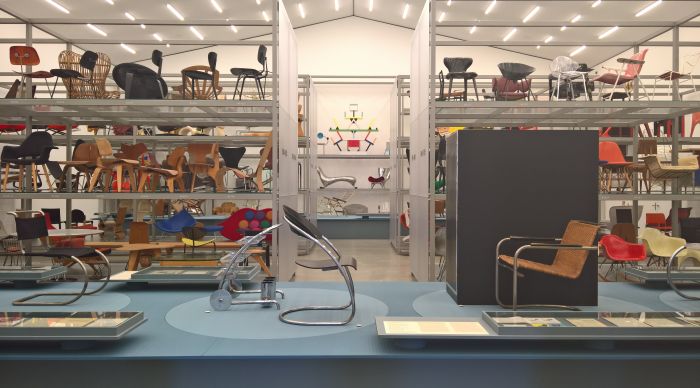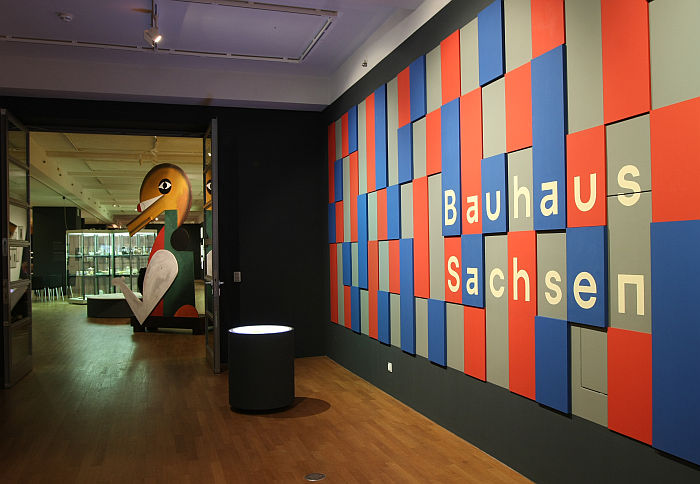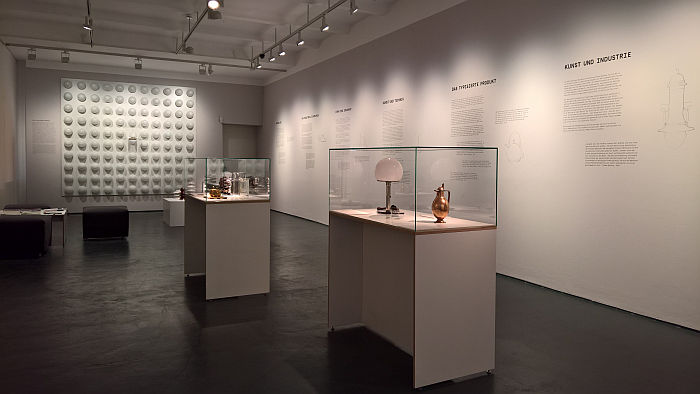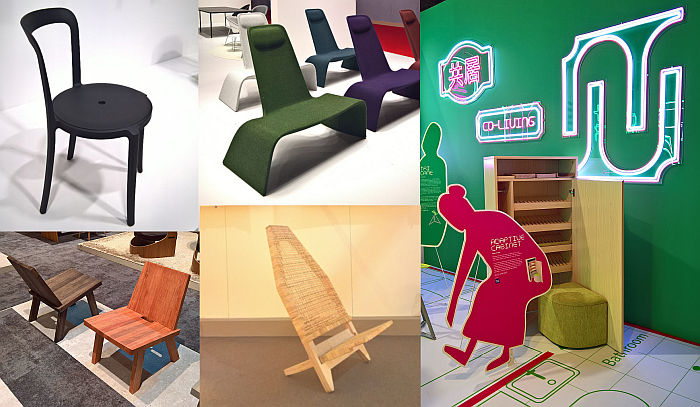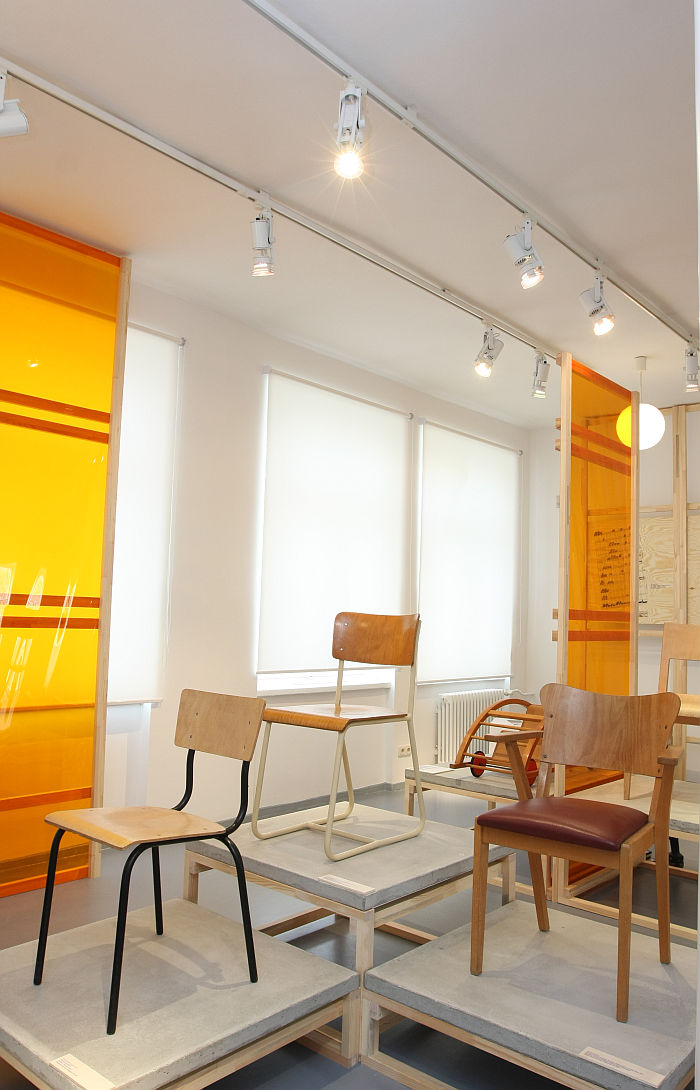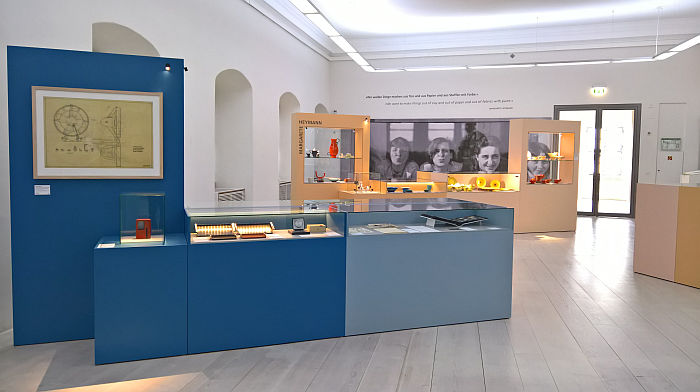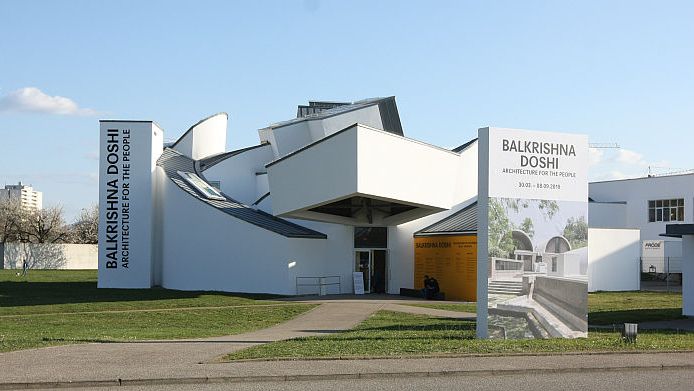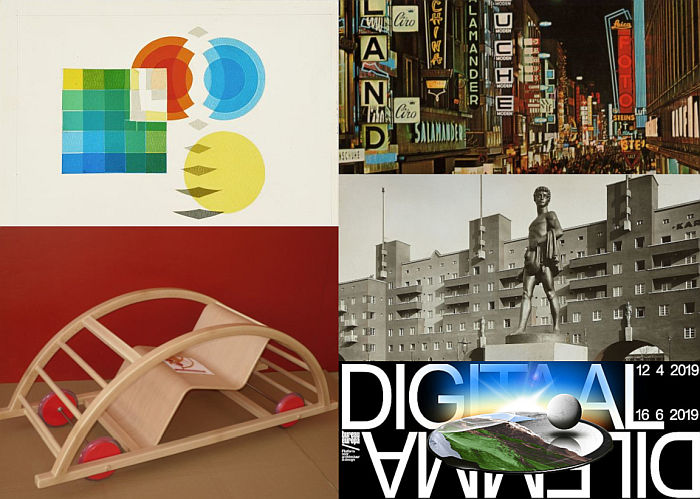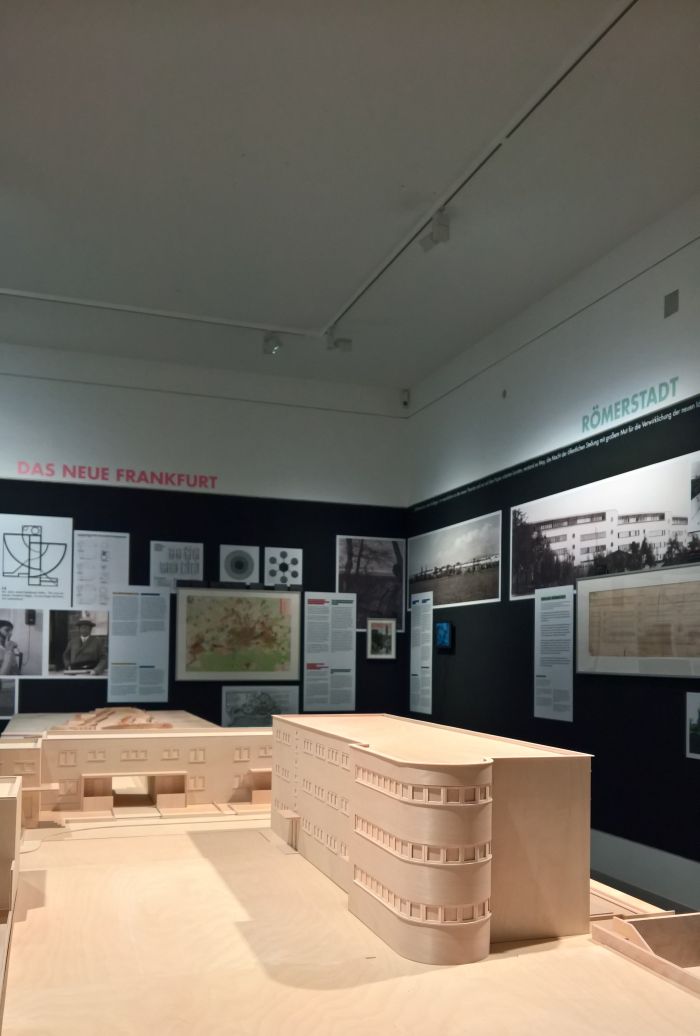Category: Exhibitions and Shows
5 New Architecture & Design Exhibitions for August 2019
According to our old friend Roget possible synonyms for “August” include great, noble, impressive or worshipful.
We can’t promise the following quintet of exhibitions will exactly meet such qualities; however, they promise to be anything but frivolous, undignified or flighty explorations of their subject, and therefore certainly should be tending to the August in August 2019…….
Living in a Box. Design and Comics @ the Vitra Design Museum Schaudepot, Weil am Rhein
In these dispatches we once doubted the prevalence of designer furniture in comics, noting and acknowledging the regular appearance of popular furniture designs in other visual media, we, off-handedly, opined, “… Designer furniture in a comic?”
Elegantly proving us very, very wrong the Vitra Design Museum’s exhibition Living in a Box. Design and Comics not only explores the use and depiction of designer furniture and lighting in comics, but also considers how comics have contributed to and influenced furniture and lighting design.
Design on Air at the CID – centre d’innovation et de design au Grand-Hornu, Hornu
According to the Greek philosopher Anaximenes of Miletus, air is the source of everything.
And whereas in the intervening 2500 years we have come to better understand the true nature, character and properties of air, as the exhibtion Design on Air at the Centre d’innovation et de design Grand-Hornu illustrates, air remains a very potent, stimulating, and protean creative force.
Time, Freedom and Control – The Legacy of Johannes Bürk @ the Uhrenindustriemuseum Villingen-Schwenningen
On May 14th 2019 the European Court of Justice ruled that all employers are required “to set up an objective, reliable and accessible system enabling the duration of time worked each day by each worker to be measured.” 1
On July 15th 1855 Johannes Bürk was granted a patent for just such a system.
A system which, as the Uhrenindustriemuseum Villingen-Schwenningen’s exhibition Time, Freedom and Control – The Legacy of Johannes Bürk explains, paved the way, certainly in spirit, for many of the developments in terms of recording, monitoring and managing time which not only developed in the course of the industrialisation of the late 19th/early 20th century, but were imperative to industrialisation’s success.
And which continue to inform and define our post-industrial society.
5 New Architecture & Design Exhibitions for July 2019
July was once known as Quintilis, and was the fifth month of the Roman calender. The fifth of ten. “Winter” being but an ill-defined cold and dark period between December and March.
And sensible as such as an arrangement sounds, and much as we could live with such an arrangement today, with the rise of the Roman Republic the wise decision was made to divide winter into January and February.
Wise not least because it means our contemporary year has 12 months: and thus two extra months in which to enjoy even more architecture and design exhibitions, and thereby to allow us all to even better understand the world which surrounds us.
Our quintet for Quintilis 2019 can be found in Stuttgart, San Francisco, Weil am Rhein, Melbourne and Dresden……
Wie wohnen die Leute? @ the Historisches Museum Frankfurt
To paraphrase the title of the recent exhibition at the Deutsche Architekturmuseum, with the Neues Frankfurt project the team of architects and urban planners around Ernst May and Ludwig Landmann sought to develop new housing for new humans.
With the exhibition Wie wohnen die Leute? the Historisches Museum Frankfurt explore the contemporary reality of the Neues Frankfurt estates and thereby the new housing of then in context of the new humans of today.
5 New Architecture & Design Exhibitions for June 2019
According to the old saying “Human spirit and the June wind often change swiftly”, and while we can undertake only little to influence the wind, a visit to an architecture or design exhibition should help strengthen, enhance, embolden and thus stabilise the human spirit. In June, or at any time of the year.
Our five recommendations for new exhibitions opening in June 2019 can be found in Ulm, Hornu, Munich, Gothenburg and Boston……
3daysofdesign Copenhagen 2019: #embassytour
In centuries past traditions were something that were established slowly, often becoming such long after those who had began them, who had understood their origins, meaning and function in contemporary society, had shuffled off this mortal coil; in our contemporary world traditions arrive over night, no-one having the patience to wait, no-one wanting to miss out on anything.
In which sense, celebrating in 2019 its second edition, our traditional 3daysofdesign Copenhagen #embassytour.
Wilhelm Wagenfeld: Lamps @ the Wilhelm Wagenfeld Haus, Bremen
“I assure you that you and your work are the model case for what the Bauhaus has been after” wrote Walter Gropius to Wilhelm Wagenfeld in April 1965.
Just how Wilhelm Wagenfeld developed that “model case” “after” Bauhaus is explored, at least in terms of one design genre, in that genre for which Wilhelm Wagenfeld is most popularly known as a Bauhaus model, in the exhibition Wilhelm Wagenfeld: Lamps at the Wilhelm Wagenfeld Haus Bremen.
Thonet & Design @ Die Neue Sammlung – The Design Museum, Munich
The German town of Boppard sits on two of the most pronounced and prominent curves on the Mittelrhein.
Can it be a coincidence that Boppard’s most famous son, Michael Thonet, is most popularly known for his curving bentwood chairs?
Can it really be a coincidence?
Possibly. Almost certainly.
What is less contentious is that the flow and meandering of first Michael Thonet’s creativity and vigour and subsequently that of the company Thonet has carved its mark not only on the Rhenish Massif furniture design and on understandings of furniture, but also the furniture industry, from production to sales and distribution.
With the exhibition Thonet & Design the Neue Sammlung Munich embark on a voyage along some 200 years of Thonet design (hi)story.
Bauhaus. Textiles and Graphics @ Kunstsammlungen, Chemnitz
That joining the Women’s Department weaving workshop was for many a female Bauhäusler not so much an active wish as the response to a take-it-or-leave-it proposition, shouldn’t be confused with the workshop producing work of an involuntary, unloving, uncaring nature, of it playing second fiddle to the rest of the institution. Far from it. The quality and relevance of the work created in the Bauhaus weaving workshop being in many regards attested by the fact it was one of the more productive and commercially successful Bauhaus workshops.
With the exhibition Bauhaus. Textiles and Graphics the Kunstsammlungen Chemnitz explore the work undertaken in the Bauhaus weaving workshops, some of the institutions’ principle protagonists and their place in wider considerations of inter-War weaving. While also neatly, if indirectly, highlighting Bauhaus’s gender differences, inequalities, prejudices……
5 New Architecture & Design Exhibitions for May 2019 – Bauhaus Special
More or less……
…..while 3 of the 5 have a direct connection to Bauhaus, 5 of the 5 are very much in the spirit of the attempts of inter-War architects and designers to reform architecture and design, to establish a new architecture and design for the new society, attempts in which Bauhaus played an important role.
And for those seeking escape from Dessau and Weimar, figuratively not physically, we refer you to our more general 5 New Architecture & Design Exhibitions for May 2019 recommendations….
table talks — Tischgespräche @ the Kunstgewerbemuseum, Schloss Pillnitz, Dresden
“Low bowls with flowers, as well as flowers placed on the tablecloth and a platter of fruit, are the most beautiful table decorations. All table centrepieces with rocks, palm trees, ostriches, deer, and such are ludicrous, for these things have no business on a table, and all tall table decorations – even those made of flowers – are also unsuitable since they screen the dinner guests from one another”, opined Ellen Key of table culture in her 1899 essay Beauty in the Home.1
But that was then.
With the exhibition table talks — Tischgespräche the Kunstgewerbemuseum Dresden present positions by students from Weißensee Kunsthochschule Berlin and the Royal Danish Academy of Fine Arts Copenhagen on contemporary table culture.
New textile worlds in a creative context – Potential technical, intelligent textiles + smart materials at Wasserschloß Klaffenbach, Chemnitz
One of the principle motors of the development of new products is new materials: stone famously ceding its primacy to bronze, which in turn ceded to iron… to …. to …. to …. plastics; new materials not only allowing for new forms of objects, but for objects with new functionalities, new properties, new purposes, and thus objects both reflective of the new needs of a continually evolving society and also allowing those needs to be not only met but, ideally, exceeded, thus contributing to our social and cultural evolution.
With the exhibition New textile worlds in a creative context – Potential technical, intelligent textiles + smart materials the Wasserschloß Klaffenbach explores such relationships between materials and objects in context of both commercial products employing new materials technology and/or understandings and also academic research indicating possible future realities.
5 New Architecture & Design Exhibitions for May 2019
While the shortlist of exhibitions for this column is regularly long, that for May 2019 was particularly so.
And particularly tricky. Perusing it we saw no realistic chance of getting it down to five, all made good claims for inclusion, none deserved to be ignored……
Then we noticed that, with a little bit tweaking, we could get two lists: one featuring those exhibitions directly connected with Bauhaus/Inter-War architecture and design, and one featuring those less directly connected.
💡
The Bauhaus/Inter-War architecture and design list will follow, but for all keen to explore architecture and design in a wider context, five new exhibitions opening in May 2019 in Munich, New York, Berlin, Basel & Villingen-Schwenningen, you may like to consider visiting……..
Between Utopia and Adaptation. The Bauhaus in Oldenburg @ the Landesmuseum für Kunst und Kulturgeschichte Oldenburg
Sitting, quietly, unobtrusively, in the north-western corner of Germany, Oldenburg is, in many regards, a near textbook example of a provincial town. Which we don’t mean as an insult. Doesn’t mean it’s irrelevant. In any sense less worthy than elsewhere. Much more Oldenburg is the sort of self-contained community that exists not so much independent of the rest of the world, but without the rest of the world noticing. Or Oldenburg caring if they notice. Oldenburg has its (hi)stories, its intrigues, its characters, its dramas, its ways, its understandings, the sheer number of cafes in the pedestrianised town centre confirming that it does, and that is all important for Oldenburg. But Oldenburg is inconspicuous. Oldenburg isn’t the sort of place that is ever going to feature on the news, is never casually referenced in TV programmes, magazine articles or radio discussions, if they have a football team, then not one who play in a league you’ve ever heard of. Oldenburg is the sort of place one is from, but one would never move to. Respectable, decorous, correct, happy, unassuming. Provincial.
And thus surely not the sort of place to be troubled by something as radical, avant-garde and reformist as Bauhaus.
Surely……..
………………But yes.
And, as the exhibition Between Utopia and Adaptation. The Bauhaus in Oldenburg in the Landesmuseum für Kunst und Kulturgeschichte discusses, was not only troubled by, but actively contributed to.
Anton Lorenz: From Avant-Garde to Industry @ Vitra Design Museum Schaudepot, Weil am Rhein
“I first saw resilient tubular steel furniture designed by Professor Mies van der Rohe in September 1927 at the exhibition “Samt und Seide” in Berlin, objects which made a very deep impression on me, because I felt and saw that here, for the first time, was a meaningful way to utilise the forces inherent in tubular steel.” Anton Lorenz, 27th March 19391
Because discussions on the steel tube furniture that, in many regards, characterises the inter-War period tend to focus on the designers and architects, it can be all too easily forgotten that without those who identified the potential, those who not only understood the significance of the new developments of the period, but had the requisite skills to bring the ideas of a, relatively, small group of creatives to the market, steel tube furniture may not today enjoy the fascination and following that it does.
Certainly wouldn’t stand as characteristic of the inter-War period.
Amongst those who played a leading a role in such developments was the Hungarian born designer and entrepreneur Anton Lorenz. With the exhibition From Avant-Garde to Industry the Vitra Design Museum Schaudepot not only explain Anton Lorenz’s role in the development of inter-War furniture, but also his post-War contributions to an, apparently, contradictory furniture genre……
Bauhaus_Sachsen @ Grassi Museum für Angewandte Kunst, Leipzig
When one considers the, let’s say, unique, derisive, unalluring place the Sächsisch dialect enjoys endures amongst German speakers, it could be considered unwise, foolhardy, to explore all too deeply the contributions made by creatives and industry in and from the State of Sachsen to the development of Bauhaus, to explore, if you will, Bauhaus’s Sächsisch accent.
With the exhibition Bauhaus_Sachsen the Grassi Museum für Angewandte Kunst Leipzig do just that…….
Unique Piece or Mass Product? @ Werkbundarchiv – Museum der Dinge, Berlin
Today industrially produced objects are so self-evident and ubiquitous it can be hard to believe there was a time when they weren’t.
There was.
With the exhibition Unique Piece or Mass Product? the Werkbundarchiv – Museum der Dinge Berlin explores the developments of industrial production in the early 20th century, the discussions and discourses which accompanied those developments and the connections between such developments and the evolution of both formal understandings and the role and function of designers.
Milan Furniture Fair 2019: High Five!!
Aside from the, inevitable, consolidation the main theme at Milan Furniture Fair 2019, and the one which occupied us much more than that which was on show for our perusal, is/was the international furniture industry’s increasing hunger for data; a hunger which embodied itself at Milan 2019 in a exponential surge in the number of manufacturers requiring potential stand visitors to either pre-register, submit a business card or have their Fair ticket scanned before being allowed onto the stand.
No data. No entry.
And a state of affairs on which we have penned several hundred (agitated) words; but, this is neither the time nor place for them. We will however return to them at a later date, not least because the scale of the shift we witnessed at Milan 2019 suggests that as a development it is on it way to becoming standard. Which ain’t good.
Elsewhere the halls of Milan were busier with visitors in 2019 than we remember them for many a long a year, the weather in 2019 cooler than we remember for many a long year, and despair and delight stood as close to one another as every year
And in that sense, and as ever accepting we may have missed one or two gems, not least because we decided against sharing our data in order to view new items of furniture manufacturers had, allegedly, brought to Milan to promote, and so subsequently weren’t on a lot of stands, a smow Blog Milan 2019 High Five!!
Shaping everyday life! Bauhaus modernism in the GDR @ the Dokumentationszentrum Alltagskultur der DDR, Eisenhüttenstadt
“We feel ourselves beholden to the traditions of Bauhaus”1 opined Rolf Kuhn, Director of the Dessau based Zentrum für Gestaltung, in the catalogue for the institute’s 1988 exhibition Experiment Bauhaus.
And while that may have been the case in the late 1980s, it certainly wasn’t always so in East Germany.
With the exhibition Shaping everyday life! Bauhaus modernism in the GDR the Dokumentationszentrum Alltagskultur der DDR in Eisenhüttenstadt allow for not only an exploration of the relationship(s) between the Bauhaus legacy and the East German state, but also for comparisons between inter-War and post-War design in eastern Germany.
Four “Bauhausmädels” @ the Angermuseum, Erfurt
“Sometimes one has to remind oneself that this change took place in one generation – such is the gap between the woman of today and of yesterday, between the girl of then and of now.”
So begins the German magazine Die Woche’s 1930 article “Mädchen wollen etwas lernen“, “Girls want to learn something”, an article which opens Four “Bauhausmädels” and is subsequently extend by the Angermuseum Erfurt to explore not only what Gertrud Arndt, Margarete Heymann, Margaretha Reichardt and Marianne Brandt learned at Bauhaus, but how they subsequently applied that “something”.
Balkrishna Doshi. Architecture for the People @ Vitra Design Museum, Weil am Rhein
“Form should not be finite but should be amorphous, so that the experience within is loose, meandering and multiple” – Balkrishna Doshi1
With the exhibition Architecture for the People the Vitra Design Museum explore Indian architect Balkrishna Doshi’s understanding of, belief in and approach to realising the amorphous, the social, the humane, in architecture.
5 New Architecture & Design Exhibitions for April 2019
From you have I been absent in the spring,
When proud-pied April, dressed in all his trim,
Enticed us into the following architecture and design exhibitions…….
William Shakespeare, Sonnet 98, From you have I been absent in the spring (extended, with apologies)
New Human, New Housing: Architecture of the New Frankfurt 1925–1933 @ the Deutsches Architekturmuseum, Frankfurt
Whereas at Bauhaus Weimar and Dessau architecture was essentially a subject of theory and experimentation, elsewhere in inter-War Europe architecture was theory and practice, and that, occasionally, on a large scale. Such as the Neues Frankfurt project.
Instigated in 1925 by Frankfurt’s then Mayor Ludwig Landmann and employing a team of some 148 architects, urban planners, garden designers, journalists et al, under the leadership of Ernst May and Martin Elsaesser, Neues Frankfurt realised between 1925 and 1933 some 12,000 new homes in Frankfurt; but for all indicated possible new forms of building, new forms of living, new forms of financing housing and new forms of urban planning. New forms that were not only responsive to the new political, social and economic realities of the 1920s, but utilised to that end advances in both process/materials technologies and also scientific understandings.
With the exhibition New Human, New Housing: Architecture of the New Frankfurt 1925–1933 the Deutsches Architekturmuseum Frankfurt reflect on the project, and into the future of urban planning and the provision of of housing in the city.
